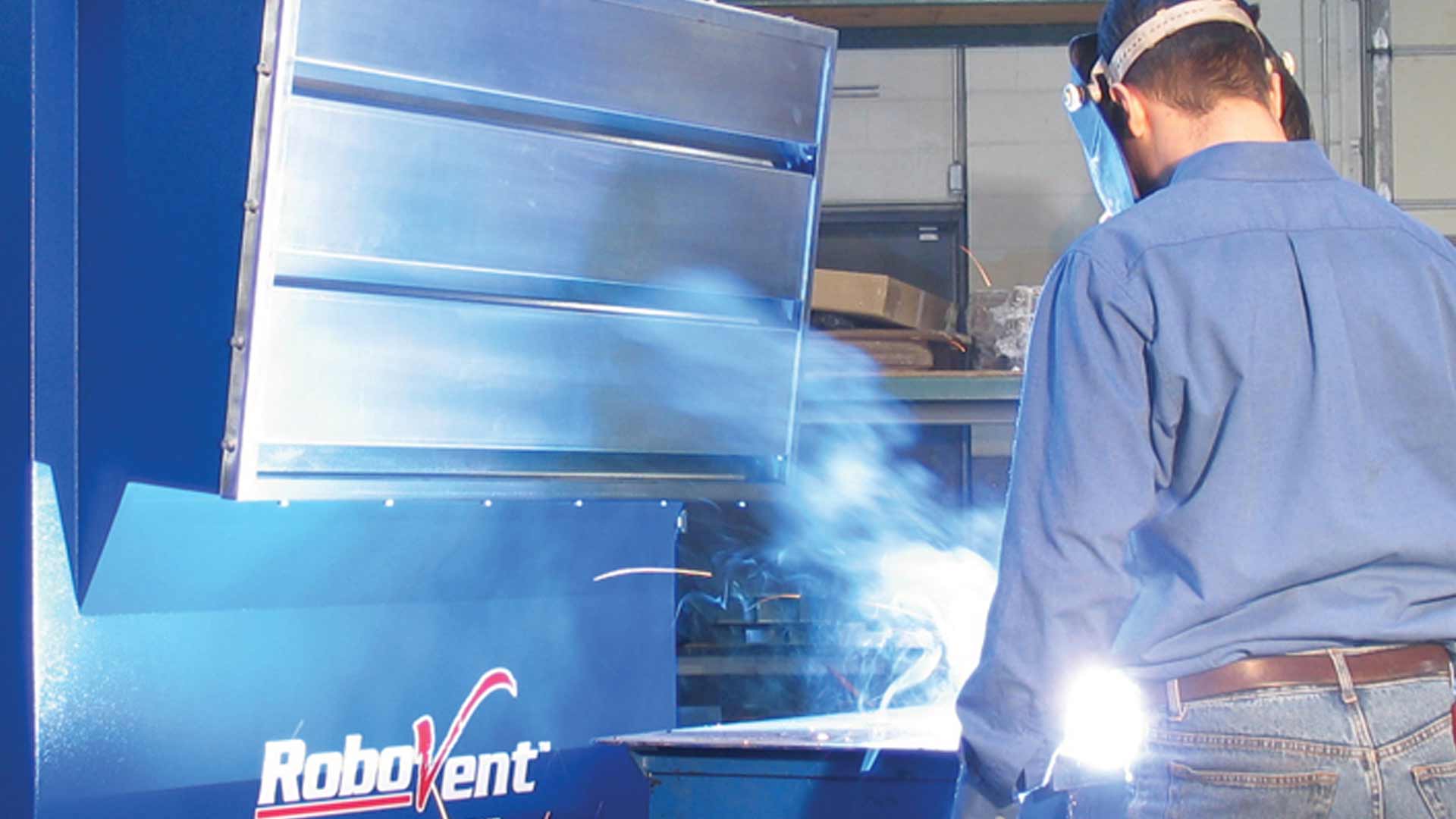6 Source Capture Options for Weld Fume Extraction

There is a variety of source capture weld fume extraction equipment available today, and it can be difficult to know which specific type is best for you. We broke down the six most popular types, including pros and cons, and one method you should absolutely avoid.
1. Backdraft Hoods
Backdraft hoods work by sucking smoke away from the source at a table or workstation. This is the best solution to handle weld fume, assuming you can make the arrangement work.
The downside of backdraft hoods is that they are often not feasible because the part being welded is too big or the welder needs to get to all sides of it. Sometimes the weld area is simply out of reach and can't be placed under the hood. This source capture method was widely used in the past, but today most welding of smaller parts is done with robotic welders.
2. Hi-Vac Fume Guns
High-vacuum fume guns capture fume at the tip of the weld gun. Due to the additional equipment needed to remove the fume, these welding guns are typically heavier than normal—a definite drawback. Typical hi-vac fume guns capture about 60% of the weld fume. However, recent developments in the market have led to the creation of a lighter version capable of capturing 90% of weld fume.
3. Hi-Vac Hoods
Similar to fume guns, these hoods are positioned close to the weld point—sometimes via magnet—but are not physically attached to the weld gun. The larger surface area of hi-vac hoods can reduce the required suction to capture weld fume while providing shielding for the operator against spark and UV exposure. One of the primary drawbacks to hi-vac hoods, however, is their potential to be cumbersome or to block the welder's line of sight.
4. Fume Arms
Fume arms are common in today's manual welding environment because they are relatively inexpensive. The drawback of fume arms, however, is that the operator has to manually reposition the arm as they move around the part. Due to this inconvenience, often the fume arm is just pushed out of the way and forgotten.
5. Overhead Hoods
Overhead hoods are positioned over a welding station and are a great choice for robotic welding. However, just because a robotic welding cell is enclosed does not mean a hood will capture all of the fume produced. It is important to create the right amount of suction to form an ideal capture zone. These hoods are also applicable to manual welding, but should not be used for high-volume manual operations.
6. Downdraft Tables
Downdraft tables are not recommended for weld fume because sparks and dust can accumulate in the table. Once dust accumulates, it's only a matter of time before a fire occurs. These units are notorious for flare ups.
In conclusion, avoid downdraft tables in almost all welding instances. The choice between the remaining five methods should be made by carefully considering a variety of factors surrounding your processes and goals. To sort through those considerations, you may want to contact clean air experts.
Additional Resources
This information was first shared in the RoboVent webinar How to Capture Weld Fume at the Source. The complete version is available here.
To learn more about weld fumes, how they affect your IAQ and what you can do about them, make sure to watch RoboVent's 5-part webinar series on the subject available at robovent.com/category/webinars/.
Contact Us With Your Questions!
SUBSCRIBE TO
BLOG UPDATES








